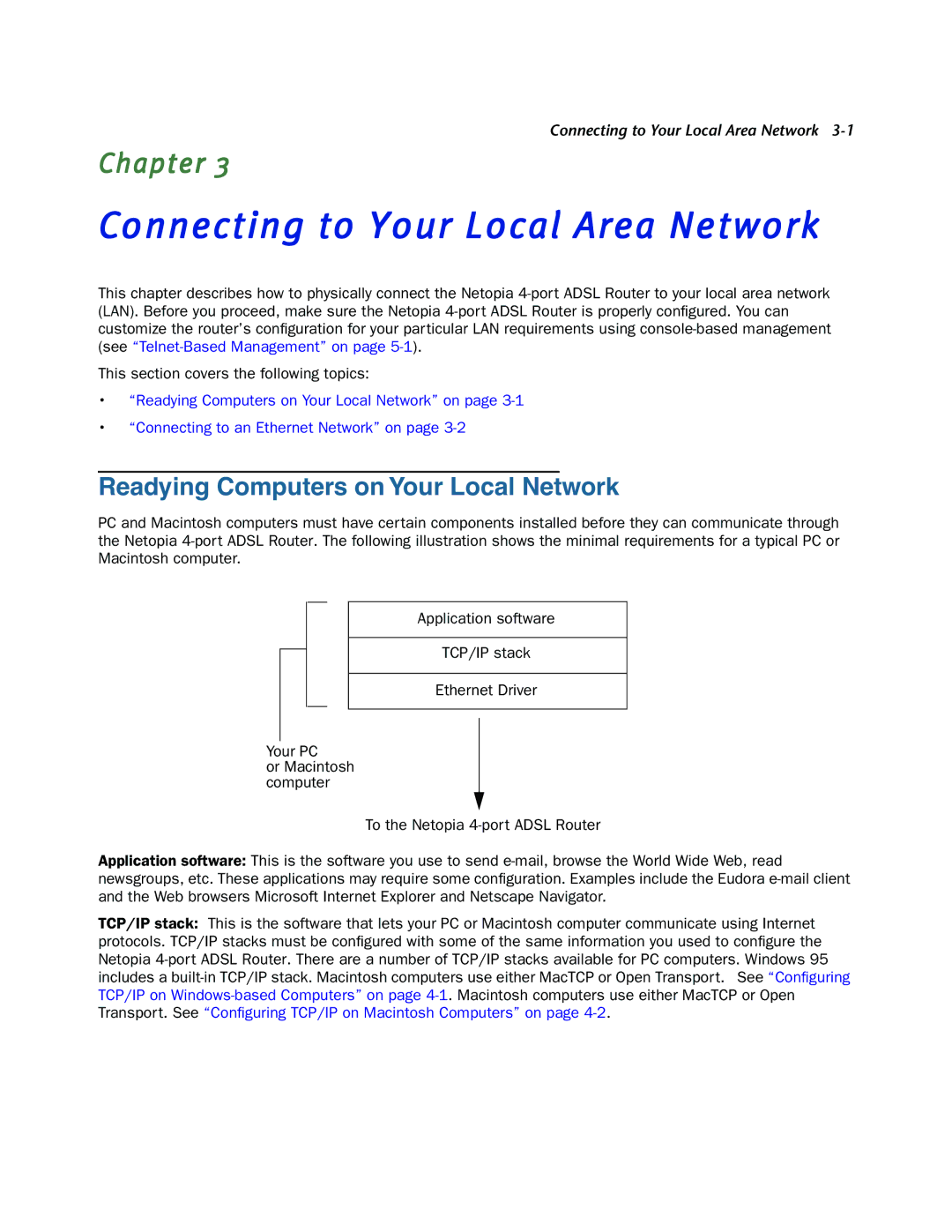Connecting to Your Local Area Network 3-1
Chapter 3
Connecting to Your Local Area Network
This chapter describes how to physically connect the Netopia 4-port ADSL Router to your local area network (LAN). Before you proceed, make sure the Netopia 4-port ADSL Router is properly configured. You can customize the router’s configuration for your particular LAN requirements using console-based management (see “Telnet-Based Management” on page 5-1).
This section covers the following topics:
•“Readying Computers on Your Local Network” on page 3-1
•“Connecting to an Ethernet Network” on page 3-2
Readying Computers on Your Local Network
PC and Macintosh computers must have certain components installed before they can communicate through the Netopia 4-port ADSL Router. The following illustration shows the minimal requirements for a typical PC or Macintosh computer.
Application software
TCP/IP stack
Ethernet Driver
Your PC
or Macintosh computer
To the Netopia 4-port ADSL Router
Application software: This is the software you use to send e-mail, browse the World Wide Web, read newsgroups, etc. These applications may require some configuration. Examples include the Eudora e-mail client and the Web browsers Microsoft Internet Explorer and Netscape Navigator.
TCP/IP stack: This is the software that lets your PC or Macintosh computer communicate using Internet protocols. TCP/IP stacks must be configured with some of the same information you used to configure the Netopia 4-port ADSL Router. There are a number of TCP/IP stacks available for PC computers. Windows 95 includes a built-in TCP/IP stack. Macintosh computers use either MacTCP or Open Transport. See “Configuring TCP/IP on Windows-based Computers” on page 4-1. Macintosh computers use either MacTCP or Open Transport. See “Configuring TCP/IP on Macintosh Computers” on page 4-2.

